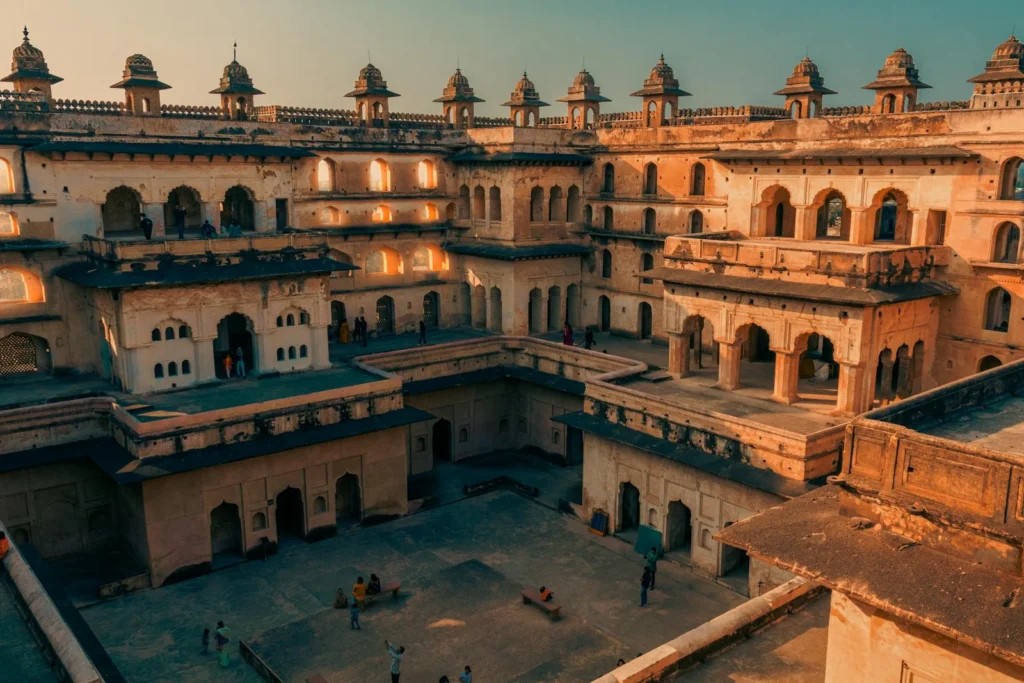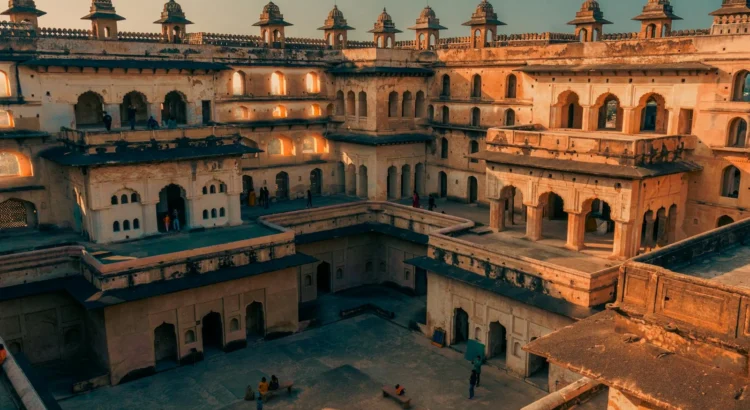
There are destinations that enchant you with their natural landscapes. Others pull you in with culinary wonders or modern skylines. But few destinations offer the kind of immersive, multi-sensory experience that comes from stepping into a world where royalty, history, and vibrant daily life converge. Welcome to a journey into a place where regal culture reigns, palaces whisper stories of bygone dynasties, and streets come alive in a kaleidoscope of color and rhythm.
While several cities around the world fit this description — from Jaipur in India to Fez in Morocco or even the royal quarters of Istanbul — the experience described here captures a broader, universal encounter with places shaped by majestic traditions and flamboyant street life. So open your imagination, fasten your sandals, and prepare to dive deep into a world where every corner is an invitation to explore.
The Legacy of Royalty: Walking in the Footsteps of Kings and Queens
There is something awe-inspiring about walking through the halls of a palace that once housed emperors, kings, or sultans. The air feels thicker, charged with centuries of ambition, betrayal, elegance, and opulence. These palaces — whether covered in rose-hued sandstone, shining mosaics, or gleaming gold — are not merely historical sites. They are living embodiments of a civilization’s highest aspirations.
As you enter these majestic structures, you’re greeted by intricately carved doors and archways. Courtyards echo the steps of royal processions, and massive chandeliers glitter with the pride of old dynasties. The scent of ancient incense still lingers in throne rooms. Marble floors stretch out like canvases painted with the footprints of royalty.
In places like India’s City Palace in Jaipur, Morocco’s Bahia Palace, or Thailand’s Grand Palace, art, architecture, and tradition unite to honor the past. Each room is a gallery of craftsmanship: silk tapestry walls, hand-painted ceilings, and ornate furniture carved by generations of artisans. The symbolism embedded in everything from murals to floor tiles tells stories of gods, heroes, war, peace, and eternal love.
Royal Ceremonies and Cultural Spectacles
It’s not just the buildings that exude regal grandeur. The culture that springs from royal heritage is equally mesmerizing. In many parts of the world, ancient royal traditions are still celebrated with great fervor. You might find yourself witnessing a vibrant elephant procession, a royal dance performance, or a candlelit religious ritual that dates back hundreds of years.
In Southeast Asia, for instance, classical dance forms were once exclusively performed for royalty. Dancers move with elegant precision, adorned in gold-embroidered costumes and elaborate headpieces, reenacting epic tales from mythology. The hypnotic rhythm of live drums and melodic flutes adds to the immersive magic.
In Rajasthan, India, royal fairs and festivals come alive with men in brightly colored turbans and women in mirror-work saris. Camels are dressed in ornate finery and paraded before crowds. The Pushkar Camel Fair and Gangaur Festival are particularly known for their connection to royal patronage and ancient customs.
These events are not merely shows for tourists — they are deeply rooted in the communities that have preserved them for generations, a living link to noble traditions and a proud cultural identity.
The Streets: An Open-Air Gallery of Color and Chaos
Just beyond the gilded palace gates lies another wonder: the streets. If the palaces reflect a kingdom’s glory, the streets reflect its soul. And what a soul it is — loud, colorful, complex, and endlessly alive.
Step into the bustling alleyways of Jodhpur’s Blue City, the pink-tinged facades of Jaipur, the colorful mosaic streets of Mexico City, or the vibrant souks of Marrakech, and you are swept into a visual explosion. Stalls overflow with spices, textiles, pottery, jewelry, and handcrafted trinkets. Street vendors call out their specials. Children weave through crowds, kites fly overhead, and every wall, door, or balcony seems painted with a different shade of joy.
What makes these streets so remarkable is how they blur the line between the sacred and the everyday. You might pass a centuries-old temple next to a tailor’s shop, or see a cow decorated with flowers resting near a family-run café. The smell of jasmine incense mingles with sizzling street food. Painted elephants, decorated carts, and hand-pulled rickshaws are as much a part of the scenery as grand monuments.
Fashion and Art: Regal Expression Through Every Thread
Regal culture is not confined to palaces or rituals — it lives in what people wear and create every day. Traditional attire often takes inspiration from the styles once worn by royalty. Think flowing robes, embroidered turbans, silk saris, or velvet kaftans — each outfit telling a story of pride and heritage.
In Morocco, the djellaba and caftan remain symbols of elegance, often woven with gold thread and passed down through generations. In South Asia, royal influences appear in elaborate lehengas, sherwanis, and jewelry heavy with precious stones.
Art, too, plays a vital role. Local artists carry forward the legacies of miniature painting, calligraphy, tilework, and embroidery that once decorated royal courts. Their works may now hang in galleries or be sold in bustling street markets, but they retain a majesty of purpose.
Every color, every brushstroke, every woven thread is a reflection of a culture that refuses to let its glory fade — instead, it adapts and thrives in the present while paying homage to the past.
Taste the Royal Table: Cuisine of Kings
No cultural journey is complete without diving into the flavors of the land, and royal heritage often left behind exquisite culinary legacies. Across different continents, royal kitchens were once the birthplace of legendary recipes — dishes that blended regional ingredients with influences from foreign lands brought in by trade or conquest.
In India, Mughlai cuisine offers a rich, spiced tapestry of kebabs, biryanis, and curries slow-cooked in clay pots, often featuring saffron, almonds, and cream — luxuries once reserved for the nobility. Moroccan royal feasts feature tagines with preserved lemons, sweet couscous, and lamb with prunes and apricots, prepared in ornate dishware and served with mint tea poured from engraved silver teapots.
In Thailand, royal cooking follows meticulous preparation and aesthetic presentation, often including carved fruits and beautifully plated meals. The goal was always to impress both palate and eye, and that tradition remains central to fine dining in many of these regions today.
Even on the streets, echoes of these royal recipes survive — sometimes reimagined for everyday life, but still bursting with bold flavors and cultural pride.
Markets and Handicrafts: The Economy of Elegance
Royal courts were once patrons of the arts, and that influence is still visible in local crafts markets and artisan villages. Shopping in these regions is more than consumerism — it is an act of cultural appreciation.
In bazaars and emporiums, you’ll find goods that once adorned royal halls: hand-woven carpets, gold filigree jewelry, bejeweled daggers, lacquered boxes, and more. Artisans often come from families that have practiced their trade for centuries — potters, weavers, painters, and metalsmiths who preserve skills that were once developed exclusively for royalty.
You may come across a miniature painter in Udaipur, replicating royal portraits with a squirrel-hair brush. Or perhaps a Zellij tile master in Fez, piecing together geometric marvels that once lined palatial courtyards. Every item is more than a souvenir; it’s a fragment of history, culture, and craftsmanship, wrapped into something tangible and beautiful.
A Photographic Dream
For photographers and artists, these regal cities and their vibrant streets are living canvases. The interplay of sunlight and shadow on palace walls, the riot of colors during festivals, the symmetry of traditional architecture, and the candid expressions of street vendors or musicians — all provide endless inspiration.
From sunrise over a sandstone fort to golden hour in a marketplace, these destinations offer one of the richest photographic palettes in the world. Whether you’re a professional with a DSLR or a traveler with a smartphone, every corner offers a postcard-worthy shot.
Spirituality Woven Into Everyday Life
Regal culture in many of these destinations is deeply intertwined with spiritual traditions. Temples, mosques, and churches built under royal patronage often remain active centers of faith, not just relics of the past.
The sounds of morning chants, call to prayer, or ceremonial bells ring through the city, adding a sacred rhythm to the vibrant chaos. It’s common to see palaces situated near religious landmarks, reflecting a time when spiritual and political power were deeply connected.
This spiritual dimension brings a deeper layer of connection to your journey. You’re not just observing history — you’re participating in a world where faith, beauty, and tradition are alive and thriving.
Final Thoughts: A Regal Invitation
To dive into regal culture is to step into a world where every detail is meaningful, where the past is not buried but celebrated, and where people carry forward traditions with elegance and pride.
From the breathtaking architecture of palaces to the intimate poetry of a hand-painted tile… from the hush of royal courtyards to the bustle of colorful streets — these experiences shape more than your itinerary. They reshape your perspective.
Because in these places, history is not something you read about in books. It’s something you walk through, taste, hear, wear, and feel. And once you’ve been touched by it, your understanding of beauty, culture, and humanity is forever changed.
So pack your bags, bring your curiosity, and step into a world where every street sings, and every palace remembers.




